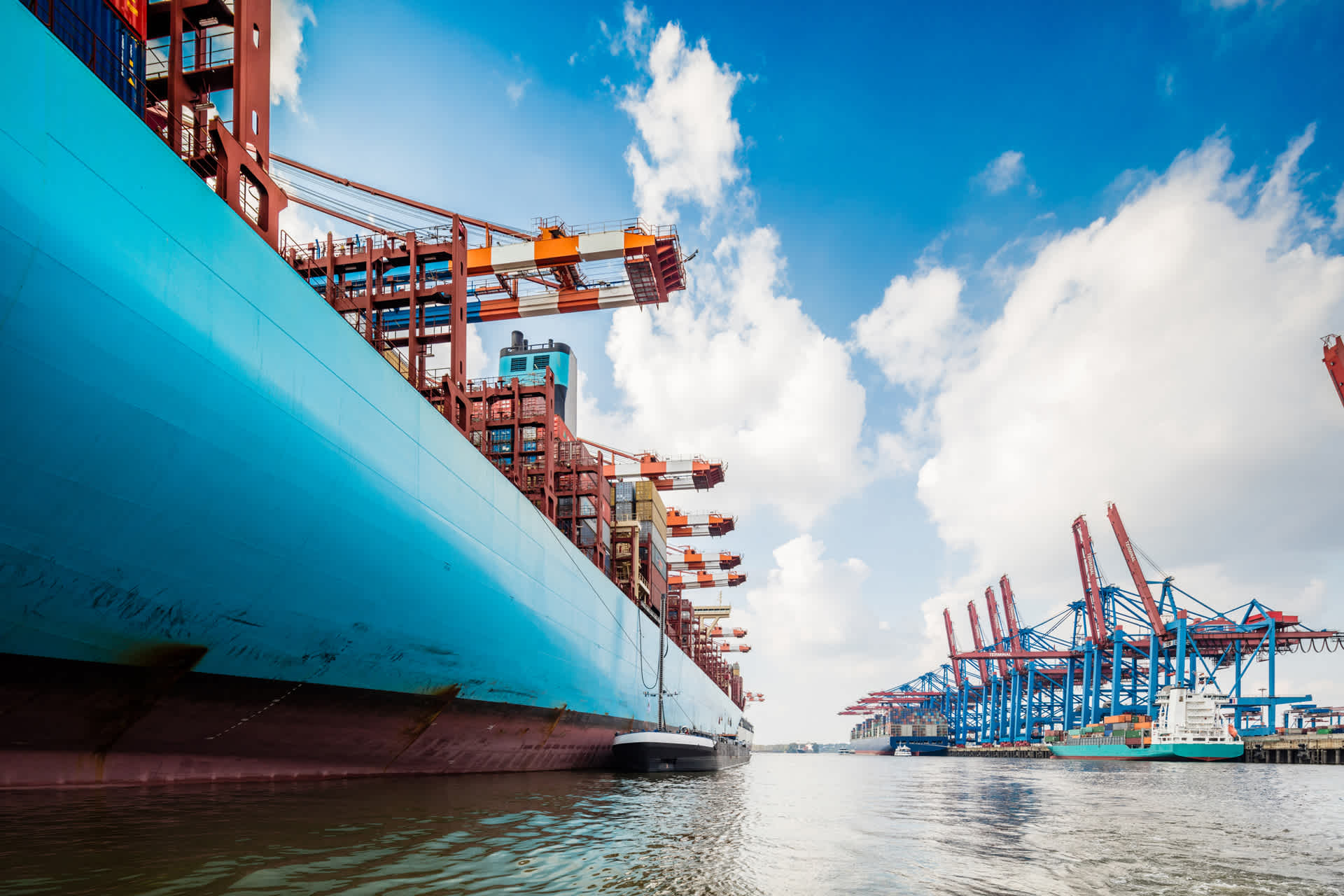Global Logistics Update
Freight Market Update: June 21, 2022
Ocean and air freight rates and trends; customs and trade industry news plus Covid-19 impacts for the week of November 16, 2021.
Freight Market Update: June 21, 2022
Navigating The Wavy Ocean Markets Webinar | Tues, June 28 @ 8:00 am PT / 11:00 am ET / 5:00 pm CEST
European Freight Market Update Live | Tues, June 28 @ 16:00 pm CEST/ 15:00 pm BST
Logistics Rewired: Avoid Stockouts & Surplus With Better Inventory Planning | Weds, June 29 @ 9:00 am PT / 12:00 pm ET / 6:00 pm CEST
Ocean Freight Market Update
Asia → North America (TPEB)
- Transpacific east bound (TPEB) sees further rate reductions as space continues to open up to both ends, reliability returns to standard service tiers, and vessel wait times remain relatively low. Shanghai continues to recover post-lockdowns as regular life and production activity resume in the region. International Longshore and Warehouse Union (ILWU) and Pacific Maritime Association (PMA) labor negotiations continue. Intermodal congestion and chassis/ equipment shortages should remain a consideration for inland moves.
- Rates: Rates remain soft in many major pockets.
- Space: Mostly open, except in a few pockets.
- Capacity/Equipment: Open, except in few pockets.
- Recommendation: Book at least 2 weeks prior to cargo ready date (CRD). For cargo ready now, importers might consider taking advantage of currently available space and softer floating market rates.
Asia → Europe (FEWB)
- Following the Shanghai reopening, volumes are picking up again but recovery has not translated into a big surge thus far. The third quarter is the traditional peak so volumes are expected to be stronger. Uncertainties on a macro level such as the Ukraine conflict, high inflation across Europe and low consumer confidence are playing a role in actual demand levels.
- Rates: Rates were extended for 2H of June with some carriers doing the same for 1H of July.
- Capacity/Equipment: Overall space is starting to fill up again. Congestion in European ports is causing sailings to return to Asia late, resulting in additional delays and some blank sailings.
- Recommendation: Allow flexibility when planning your shipments due to anticipated congestion and delays.
Europe → North America (TAWB)
- No changes overall on the congestion situation which is slowly improving on both coasts of North America. Vessel average delays also improved to 8 days down from previously reported 10 days.
- Rates: Most of June rates are extended through July. No signs of decrease are reported so far.
- Space: Still very tight but with some signs of improvement on certain loops for both the U.S. east coast (USEC) and U.S. west coast (USWC).
- Capacity/Equipment: Capacity remains tight for both Northern Europe and Mediterranean services. Better equipment availability at port. Shortages remain at inland depots.
- Recommendation: Book 4 or more weeks prior to CRD. Request premium service for higher reliability and no-roll.
Indian Subcontinent → North America
- Demand remains soft, but the answer to “Will rates continue to decrease?” remains unknown. Some carriers in the market have already filed for a general rate increase effective in early July.
- Rates: lowest levels seen since the sharp rise in 2020-21.
- Space: Available at Freight All Kinds (FAK) rate levels.
- Capacity/Equipment: Remaining stable with some reported deficits of equipment at Inland Container Depots (ICDs).
- Recommendation: Take advantage of declining rates. In the past carriers have implemented blank sailings to avoid underutilization. This could lead to increased rates on the horizon.
North America → Asia
- Vessel arrivals and available capacity remain fluid for all USWC ports. The USEC continues to see challenges with vessel congestion and some vessel strings still omitting Charleston and Savannah entirely. A few ocean carriers have advised that rail operations from Chicago over the West Coast have improved and are open to increased volumes. Erratic vessel schedules continue to cause significant challenges with posted earliest return dates and vessel cut-offs at the port.
- Rates: Limited GRI’s for July announced.
- Capacity/Equipment: Deficits on containers and chassis continue to plague Inland Port Intermodal (IPI) origins. Chicago has been the most reliable. Availability for standard equipment at ports has not been an issue for most ports but a large number of carriers have advised of continuing shortages on 40s at the port of Oakland.
- Recommendation: Please place bookings 4 weeks prior to vessel Estimated Time of Departure (ETD).
North America → Europe
- Continuing congestion issues in Europe are being compounded by the ongoing schedule issues for USEC ports. The port of Houston continues to experience significant capacity constraints due to schedule delays and port congestion with one service being reduced from weekly to biweekly. USWC service to Europe remains extremely tight due to void sailings and skipped ports caused by systematic delays. The suspension of Pacific Northwest coverage for North Europe may be lifted in July if the operational situation permits. USWC coverage for Mediterranean ports now has reduced capacity due to one string being phased out.
All carriers have issued a booking stop for shipments to Ukraine, Russia, and Belarus. - Rates: No GRI announced for July.
- Capacity/Equipment: US East Coast capacity to North Europe has capacity available. Deficits are still plaguing many IPI origins. Availability for standard equipment at ports has not been an issue, but special equipment is hard to come by.
- Recommendation: Please place bookings 3 to 4 weeks in advance for East Coast/Gulf sailings and 6 weeks for Pacific Coast sailings.
North America Vessel Dwell Times

Air Freight Market Update
Asia
- N. China: Major airline capacity ex-PVG has recovered by more than 90%. In addition to the return from lockdown, quarter end demand is getting stronger for both TPEB and FEWB tradelanes. As a result, rate levels have increased slightly from the previous week.
- S. China: The overall market is soft and demand weak with rate levels decreasing. USEC volume is recovering at a slower rate than USWC volume. Some carriers have dropped rates in order to stimulate the market.
- Taiwan: Although the raw material shortage is gradually recovering there is excess TPEB capacity in the market due to the low consumer demand in the US. Overall ex-TPE the market is slack with LAX and ORD destinations having more space available and rates decreasing for FEWB lanes. Effective June 22, fuel rates will increase to $2/kg.
- Korea: Market demand to the USEC and FEWB tradelane continues to be weak, while demand to the USWC remains stable. Carriers have reduced rates on both tradelanes to attract demand in the market.
- SE Asia: Demand ex-Thailand continues to be slow. Carriers are offering significant discounts for dense cargo to help attract volume. The Malaysian market continues to be affected by raw material shortages. Demand is expected to remain low for the remainder of June. TPEB demand ex-Vietnam dropped slightly compared to last week. Some capacity has also been reduced due to aircraft maintenance. Shipments transiting through DOH may see longer transit times due to terminal congestion.
Europe
- Demand is continuing to maintain at a stable level.
- Capacity further increased, rate levels are starting to reduce especially on the transatlantic (TA) trade lane.
- Jet fuel price has started to increase and is expected to be reflected in the fuel surcharge charged by carriers in July.
- Freighter capacity is improving with better rates and lead times, booking to uplift window is approx 5-10 days.
- Build pallets below 160CM increase the possibilities of better uplift and rates based on passenger capacity.
- Deferred routings via secondary hubs are still providing cheaper rates overall.
- For all trade lanes, continue to place bookings early to secure the best uplift options/routings.
Americas
- Demand remains high, especially into Europe. Capacity is manageable, and has already surpassed 2019 pre-covid levels.
- Los Angeles, Chicago, and New York (LAX/ORD/JFK) ground-handlers are busy due to the high export volumes and origin dwell times of 2-3 days have been reported in some cases.
- Capacity into Shanghai has normalized and most carriers have resumed normal operations and schedules.
- Rates remain stable week over week.
Trucking & Intermodal
Americas
- US Import/Export Trucking
- Market Trends
- New York, Savannah, Houston, and Norfolk ports have all seen vessels at anchor during May; increased volumes have caused chassis shortages and empty return difficulties especially in NY/NJ.
- Oakland and Seattle/Tacoma are experiencing 12+ day port dwell times. Intermittently empty return restrictions from steamship lines have limited the number of available chassis, reducing the trucking capacity in these markets.
- Toronto rail ramps continue to experience a high volume of import containers on the ground, causing a need for additional lifts that lead to higher wait times inside the terminals.
- West Coast labor discussions between the International Longshore and Warehouse Union (ILWU) and the Pacific Maritime Association (PMA) started June 1st, the current contract expires on July 1, 2022.
- Highway Diesel fuel prices continue on a record high. East coast, midwest, central atlantic, lower atlantic and gulf coast prices trended down in the second half of May, while west coast and Rocky Mountain prices rose through the second half of May.
- US Domestic Trucking
- Contract business is gaining more interest from carriers than spot loads as fuel surcharge agreements are almost exclusively associated with contract freight.
- Diesel prices remain at record highs, peaking at $5.62/gallon in May. Fuel continues to be a much more taxing operating expense for fleets both on loaded and empty miles.
- Tender volumes climbed back at the tail end of May largely due to Memorial Day push; however, overall volumes are still low—down 20% YoY.
- Tender rejection rates bounced back marginally the last week of May after diving 8%.
- Capacity has tightened in the South & Southeast markets due to produce season.
- We are still seeing lower spot rates in the market (down 20%+ YoY), but they crept up in the final days of May.
Customs and Compliance News
President Biden Signs the Ocean Shipping Reform Act into Law
On June 16, President Joe Biden signed the Ocean Shipping Reform Act into law. This bill aims to clear out supply chain bottlenecks, punish carriers for unfair practices, and generally address the ocean freight import and export process in the United States. The new law is the biggest shakeup of US ocean freight shipping policy in decades.
Factory Output news
- Mainland China: China-Europe freight trains increased sizeably in Eastern Chinese cities. Taking Hefei as an example, the trains carried 31956 TEUs containers, up 106% year-on-year. Source
- Taiwan: Taiwan Semiconductor Manufacturing Company (TSMC) is planning to shorten customers’ payment terms next year due to low cash flow and increase prices by 10% amid increasing manufacturing costs. Source
- Vietnam: Samsung's Vietnam factory reduces the number of work days to 3 days per week adjusting to market conditions. Source
- Cambodia: Cambodia moves to create more than 2000 employment opportunities in apparel, leather and wood manufacturing. Source
- Singapore: AEM Electronics to expand manufacturing operations in Singapore. Source
- Philippines: Unfavorable weather conditions in the Philippines have caused a decline in sugar production. Source
- India: UAE will suspend import and re-exports of wheat and wheat flour originating from India (The world second largest producer of gains) for a duration of 4 months. Source
Freight Market News
US Shippers Reevaluate Trucking Strategy
Trucking spot rates have dropped below contract prices for the first time in over a year, according to The Loadstar. This year most US shippers have opted for freight contracts to secure trucking capacity and protect against rate escalation. Amidst recent inflation and retail sales falling, shippers are pausing on previous strategies to build up in-house trucking capabilities or find dedicated fleets.
Global Economy and Supply Chain Bullwhip Collide
As the supply chain experiences the bullwhip from the Covid days, the rest of the global economy is seeing a consumer spending slowdown, which will greatly impact freight demand. FreightWaves details what these two forces colliding will mean for ocean freight and the trucking market.
Flexport Research Updates
Build it and They May Not Come - Summit of the Americas Panel
Do we have clarity on the Biden administration’s trade policy for the Americas? What do corporations think of it and how may they respond? Flexport’s Chief Economist, Phil Levy, recently moderated a panel at the CEO Summit of the Americas with representatives from the mining, metals, and engineering sectors.
Accidents and Precedents - Corporate Inventories Soar
What’s the right level of corporate inventory? Have specific industries already overbuilt their stocks versus requirements? This report gathers over a decade of data on corporate inventory to sales ratios from over 1,400 companies. We find that inventories in Q1’22 rose 13% year over year while sales went up just 6%. There are at least seven different reasons for that disparity, ranging from deliberate strategies to accidental outcomes. The result is that the inventory to sales ratio is back to pre-pandemic levels across the group and five of eight sectors are already well above historic levels.
Weekly Economic Report: Taking the Long View
The big news of the week was the U.S. Federal Reserve’s decision to hike the Fed Funds rate by 75 basis points. The transmission mechanism by which this hits the broader economy tends to be longer-duration bond rates, which have risen dramatically. The effect on the economy will depend a great deal on people’s expectations for inflation.
Air Timeliness Indicator
The Air Timeliness Indicator measures the amount of time taken to move air freight along two major trade lanes from the point of consolidation to arrival at final destination. The latest indicator saw the TPEB fall slightly to 11.1 days for the four weeks leading to June 12, while the FEWB fell to 9.8 days. Both levels were last seen in late March and may reflect seasonal shifts working their way out of the system as importers switch to summer goods.
Ocean Timeliness Indicator
The Ocean Timeliness Indicator similarly measures transit time for ocean freight along the same two trade lanes. In the past week, the FEWB decreased significantly to 95 days, hitting levels last seen in September 2021. The TPEB meanwhile fell one day to 98 days. Continued improvements in cargo ready to departure times may still be moving through the system as Asian ports debottleneck. The indicator may also be showing that the worst of late 2021 congestion may be passed, but the metric remains well above pre pandemic levels.
Logistics Pressure Matrix
Flexport’s Logistics Pressure Matrix (LPM) gathers 10 data points in an attempt to provide a picture of the challenges facing logistics networks from the demand side and a view of ongoing activity on US-inbound routes. In the latest update, consumer expectations fell dramatically to the lowest level in over ten years. A new measure of warehouse pricing indicates that the price of storing inventory remains high along with shipping. Origin ocean handling times continue to improve while air transit times remain near previous levels.
Understanding the Trade Activity Forecast
Which industries have driven the U.S. trade boom? Where might they go next? What will be the impact on the wider economy? Flexport’s Trade Activity Forecast (TAF) was launched in October 2021 to provide a guide to the outlook for U.S. merchandise imports. We have expanded the TAF to include U.S. exports and a gauge of the U.S. trade deficit. Our initial estimate indicates U.S. merchandise imports will grow by 3.7% sequentially in May and exports will dip by 1.2% while the trade deficit will reach $352 billion in Q2’22.
Freight Market Update is a complimentary service from Flexport, the modern freight forwarder. If you're not already a subscriber, we invite you to subscribe here.
Please note that the information in our publications is compiled from a variety of sources based on the information we have to date. This information is provided to our community for informational purposes only, and we do not accept any liability or responsibility for reliance on the information contained herein.


